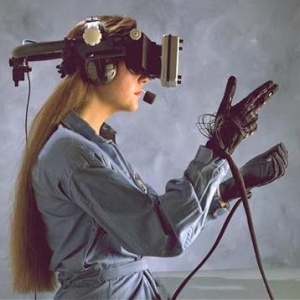According to a company website, Virtual Reality, or VR, is a pain reliever. VR is the same process used to create realistic experiences while playing video games.
“Over a decade of research and clinical studies have shown that immersive virtual reality can significantly reduce pain, relieve stress, and build resilience,” according to the DeepStream VR website.
They even provide a bibliography of supporting research.

Their products include items needed for a VR experience, such as the wearable headset–called a VR Display, a partnership with a company that sells laptops that work well with the technology, and wearable biosensors that, according to the website, “let your heart control your experience.”
In an interview, DeepStream VR’s CEO, Howard Rose, said pain is more than what you feel. “The more stressed out we are and the more out-of-control we feel, the more amplified the pain. So pain is not just a matter of signals going to your brain. Your brain also has an active role in how you experience pain,” he said.
VR works as more than a distraction from thoughts and worries surrounding pain. “So, simply put, the mechanism for virtual reality pain relief is that our brain really only has a certain amount of cognitive power, and attention acts like a gate. The more we can direct your attention away from the pain, the less pain you experience,” Rose said.

The elaborate VR experience occupies space that was formerly used to process pain and reduces pain, because, Rose said, it is “engaging and directing your mental focus. When you’re in [the virtual reality program] COOL!, you’re moving through a landscape and there are things to do; there are otters, and there’s stuff to play with; there’s a lot to engage your mind and engage your focus. That’s all working to absorb as much of your mental energy in the virtual experience as possible, so you have less brain power to focus on pain.”
Rose said that people with third-degree burns are an example of those that this technology can help, because “Safe doses of narcotics are not enough to relieve all that pain.” What happens when there isn’t enough medicine to relieve pain–or when the body can’t handle the side effects from narcotics?
Is it really as simple as mind over matter? Perhaps with a little mental help.
Acute and chronic pain have been studied with VR, and Rose said that VR studies are showing it offers the most help to the people who need it most. Since a person can’t have VR 24 hours for chronic pain, they developed a different process.

“So the idea is that we use VR as a way to enable people to get moving, to get up and active, to engage… so in the short term they get a benefit from pain relief akin to what happens with acute pain, but in the long run our goal is to help them be more resilient and pain-free long after they take the VR helmet off,” Rose said.

One experience used with those who have chronic pain is the Virtual Meditative Walk through a forest with audio guided meditation. “The person walks on a treadmill and sees a virtual environment projected on a big screen. A biosensor measures the person’s level of stress and anxiety, and that data feeds into the virtual world to do biofeedback. So when the biosensor says the stress level goes up, the virtual world begins to fog over, reminding the person to calm their mind and relax through the pain,” Rose said.
The DeepStream VR administrative team brings two VR veterans who have been working with the technology for the 20 years–Howard Rose and Ari Hollander, and a Chief Scientist, Dan Shapiro, with 30 years’ experience with artificial intelligence applications and games.
For now, the company can set up health care providers and researchers with their software and VR system. They can’t provide hardware advising and support for individuals who don’t already have VR systems, but can provide COOL! to individuals who already have VR systems.
You can follow the DeepStream VR blog here.

